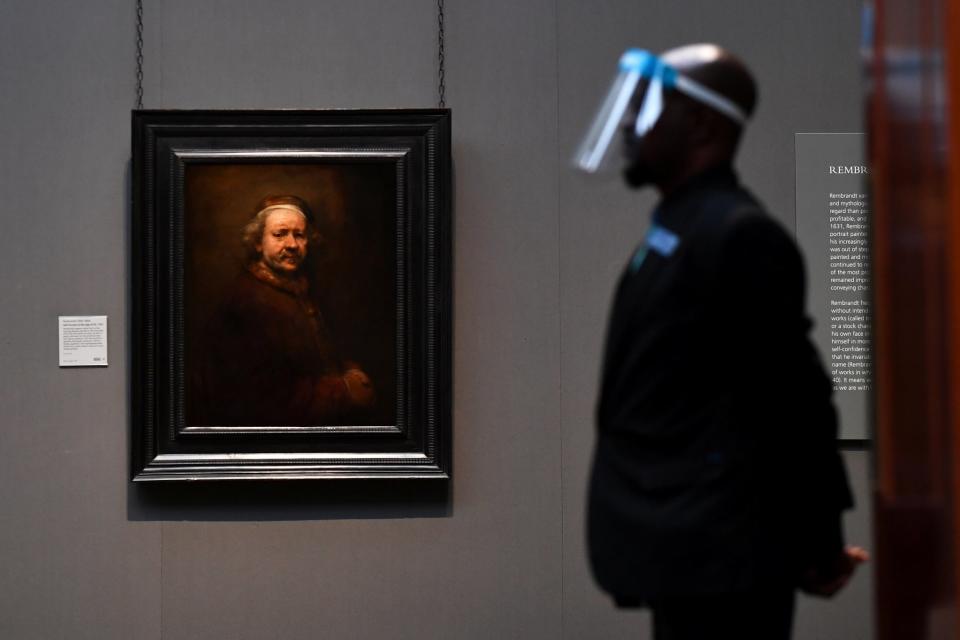Breathtaking colours and refuge from the chaos: returning to the National Gallery after lockdown

Being back in the National Gallery after lockdown feels like I’m using my eyes properly again for the first time in months. Standing before some of the world’s most powerful, arresting paintings, I can feel colour flooding my retinas after weeks of squinting at my laptop.
A roomful of Rubens landscapes, like a hazy, early-morning view of his country house, Het Steen, transports me to places I have longed again to travel to; the rage on the face of the furious goddess in Titian’s dramatic, chaotic Diana and Actaeon (the gallery’s ground-breaking Titian exhibition was open for just three days before it was forced to close) takes my breath away.
Meanwhile, there’s been drama too behind closed doors. Wednesday’s reopening will be momentous — even during the Second World War, the gallery kept one artwork a month on display. But the public can only visit again because of over two months of intensive planning, with staff working non-stop during lockdown. Since April, when no reopening date was in sight, plans were underway. Vast quantities of PPE, acrylic glass, visors and hand sanitiser were ordered, risk assessments drawn up, and there has been a constant dialogue with staff and unions to ensure everyone coming back was comfortable.
Director Gabriele Finaldi has spent these last months in Zoom meetings not just with Securitas, which provides much of the front-of-house staff, ministry officials and Public Health England but also his equivalents across the world, all operating to similar protocols.

The process hasn’t been cheap, says the National’s chief operating officer, Paul Gray — he won’t divulge a figure but concedes that it’s “a lot less than it would have cost us to design and build a major exhibition”. That’s lucky, because as Finaldi says, “we’re going to take a big hit financially”. No foreign tourists (two-thirds of visitors), takeaway-only in the cafe and decreased opening hours won’t help — yet shorter days will save staff from having to use public transport at peak times, and help maintain the strict new increased cleaning regime, a painstaking process in itself. The conservation team must approve all new cleaning materials to ensure the fabric of the building isn’t damaged.
Every aspect of what visitors will do when they step inside the gallery has been considered. Advanced online booking means queueing should never take more than 15 minutes, doors are kept open so no one need touch the handles and even going to the toilet has had hours of thought put into it. They will have a one-in one-out system; alternate sinks are taped off (and urinals, which have also been equipped with screens); and toilets will be sprayed monthly with a long-lasting anti-microbial solution that bonds to surfaces and kills new pathogens. Of course, the cleaners are fully equipped with visors and gloves.
The scrupulous planning that has gone into reopening the gallery in the middle of this crisis, ironically, will help visitors to forget that they are living through a pandemic at all. Yes, you’re wearing a face covering and following arrows on the floor, but inside these walls feels like a refuge from the chaos.
The experience is even heightened — you may find yourself nearly alone in a room with some of the most extraordinary artworks ever made. As Finaldi said last week, art will be part of our recovery — but I have a feeling Londoners won’t need persuading. As I left the building, a group was already asking a security guard if they could come in.


